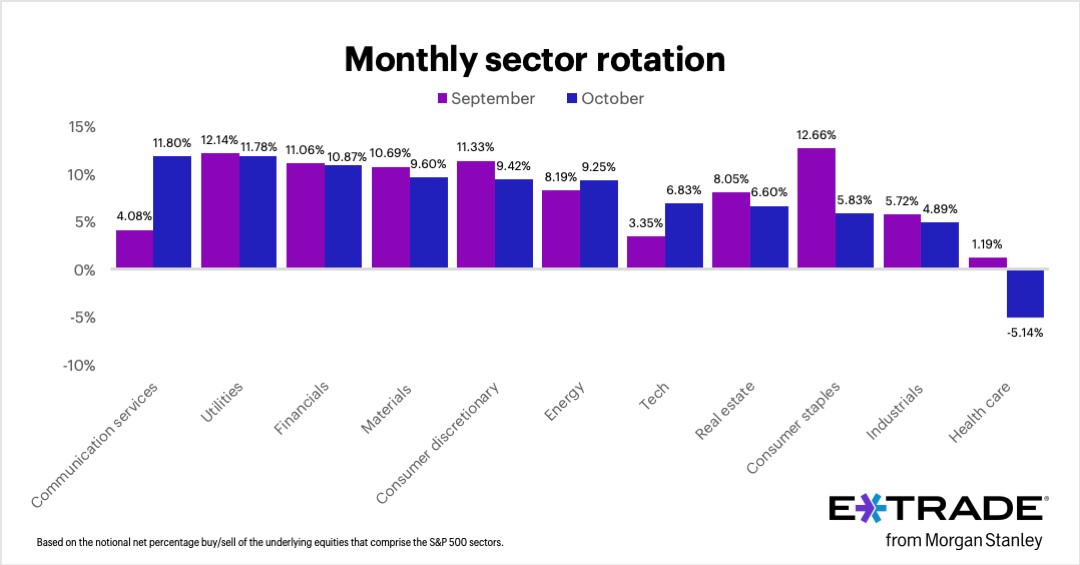
By Cobic B.V., with input from Gido van Tienhoven, ATEX/IECEx explosion safety specialist
Key takeaways:
-
Preventable disasters stem from neglect, not mystery. The Imperial Sugar explosion showed how poor housekeeping, inadequate dust collection, and unreviewed equipment changes can turn a manageable hazard into catastrophe — despite decades of known risk.
-
Combustible dust is a dynamic operational hazard. Everyday food ingredients like sugar and flour become explosive under certain conditions. Because dust behavior shifts with process, material, and environmental changes, prevention requires constant vigilance, not one-time fixes.
-
Adopt a standards-based, systematic safety culture. Frameworks like ATEX and IECEx transform safety from reactive maintenance to proactive design. By classifying zones, certifying equipment, and enforcing continuous reassessment, they embed explosion prevention into daily operations.
On February 7, 2008, at approximately 7:15 p.m., the Imperial Sugar refinery in Port Wentworth, Georgia became a scene of devastation. A primary explosion in an enclosed conveyor belt triggered a catastrophic chain reaction of secondary explosions that ripped through the facility’s packing buildings and silos. Thick concrete floors buckled upward. Brick walls collapsed into stairwells. Wooden roofs shattered. Fourteen workers died. Thirty-eight others suffered injuries, many with severe burns. Security cameras from nearby businesses captured massive fireballs erupting several stories into the night sky.
What made this tragedy particularly difficult to accept was the verdict issued by the U.S. Chemical Safety Board (CSB) in their 2009 investigation report: the explosion was “entirely preventable.”
How sugar dust becomes dangerous
To understand why Port Wentworth happened, we first need to understand what makes dust explosions different from other industrial hazards.
Sugar seems harmless. A spoonful causes no harm. But in the food processing industry—and particularly in facilities handling sugar, flour, grain, cocoa, or starch—an entirely different phenomenon emerges. When fine particles become suspended in air within an enclosed or semi-enclosed space, they create something called a combustible dust cloud. Add three ingredients together—fuel (the dust particles), oxygen (from the air), and an ignition source (a spark, friction, or hot surface)—and the result is not a simple fire, but an explosion.
The physics involved is unforgiving. Unlike a surface fire, a dust explosion propagates outward in all directions simultaneously, seeking the path of least resistance. At Imperial Sugar, that initial explosion in the conveyor belt created a pressure wave that traveled horizontally through the basement tunnel, then vertically upward, blasting through a brick wall and into the stairwell system. As the pressure wave moved through the packaging building, it stirred up settled sugar dust that had accumulated throughout the facility. This suspended dust then encountered the flame front of the initial explosion, creating secondary explosions of far greater violence than the first.
The real cause: Years of neglect
The CSB investigation uncovered something striking in the facility’s internal records. A memo from 1967—forty-one years before the explosion—showed that Imperial Sugar’s own managers had already identified the risk of dust explosions that could “travel from one area to another, wrecking large sections of a plant.” Despite this documented awareness spanning four decades, almost nothing changed.
On the night of the explosion, workers testified that spilled sugar had accumulated knee-deep in places. Sugar dust coated equipment and surfaces throughout the facility. The conveyor belt that sparked the initial explosion had been enclosed in steel panels just a year prior, but this enclosure was never equipped with a dust collection system. Meanwhile, the facility’s dust extraction system in the packing building had suffered a minor filter explosion three weeks before—a warning sign that went unheeded. That filter remained out of service on February 7. The ventilation system was faulty. And most critically, housekeeping was sporadic, often performed using compressed air, which actually scattered dust into the atmosphere rather than containing it.
When the CSB issued its findings, Chairman John Bresland stated plainly: “This accident was caused by poor equipment design, poor maintenance and poor housekeeping. If the dust was not allowed to build up, this terrible accident would not have happened.”
Why food processing remains a unique challenge
The food processing industry has made considerable progress on safety in recent decades. Yet combustible dust hazards in this sector present a distinct technical challenge that extends beyond general industrial safety frameworks. Unlike hazardous chemical plants, which operate under established regulatory oversight, food facilities handle materials whose explosive properties depend heavily on specific conditions: particle size distribution, moisture content, concentration in air, and the presence of ignition sources.
This complexity means that standard safety approaches may not adequately address dust explosion risks. The conditions that create a hazard can shift based on operational factors, equipment wear, or seasonal variations in raw materials. Moreover, dust hazards are often less visible than other industrial risks, which can make them easier to overlook even in facilities with strong safety cultures.
The statistics underscore the point. Between 1980 and 2005, the CSB documented 281 combustible dust explosions across all industries, resulting in 119 deaths and 718 injuries. Many occurred in food and agricultural settings. The incidents reveal a pattern: hazards that were technically foreseeable, but operationally overlooked.
What prevention looks like: A standards-based approach
The CSB’s recommendations aligned with what international explosion protection standards have since formalized. The ATEX Directive (European Union) and IECEx (International Electrotechnical Commission) standards provide a comprehensive framework for managing explosion hazards in industrial facilities, including food processing plants.
These standards operate on the principle of systematic hazard assessment and control. Rather than prescribing a single solution, they require facilities to identify where explosive atmospheres may occur, classify these areas into zones based on frequency and duration of risk, and then select equipment and design measures appropriate to each zone. For combustible dust environments, this translates into several key requirements:
Equipment selection and design must account for the specific dust hazard. Different dust types have different ignition temperatures, explosive pressures, and particle size distributions. ATEX and IECEx certification ensures that equipment selected for a dust environment can withstand the expected explosion pressures and will not create ignition sources through mechanical wear, friction, or static discharge.
Dust containment and collection systems must be designed as integral parts of the facility, not afterthoughts. The standards require that dust collection equipment itself be certified for use in explosive atmospheres, creating a closed loop where dust is contained and removed systematically rather than allowed to accumulate.
Understanding ATEX and IECEx zones
The foundation of ATEX and IECEx frameworks is the systematic classification of facility areas into zones based on the likelihood and duration of explosive atmospheres occurring during normal operations.
For gas and vapor hazards, there are three zones. Zone 0 represents areas where an explosive atmosphere is present continuously or for long periods. Zone 1 represents areas where an explosive atmosphere is likely to occur occasionally during normal operations. Zone 2 represents areas where an explosive atmosphere is unlikely to occur, and if it does, only rarely and for short periods.
For dust hazards, the classification follows the same logic. Zone 20 represents areas where combustible dust is present continuously or for long periods. Zone 21 represents areas where combustible dust is likely to occur occasionally during normal operations. Zone 22 represents areas where combustible dust is unlikely to occur, and if it does, only rarely and for brief periods.
Equipment categories and groups
Within each zone, ATEX and IECEx specify equipment categories (also called groups in some contexts) that determine the performance standards equipment must meet. A piece of equipment certified for Zone 22 dust will have different electrical and mechanical specifications than equipment for Zone 21. The standards ensure that equipment selected for a particular zone can withstand the expected explosion pressures and temperatures, and will not create ignition sources through mechanical wear, electrical discharge, or thermal effects.
Practical application in food processing
Food processing facilities handling sugar, flour, grain, or cocoa typically operate with a mix of these zones. A grain silo interior might be classified as Zone 21 (dust likely to occur occasionally). The area around a flour mill conveyor might be Zone 22 (dust unlikely except during spillage or maintenance). Storage areas for finished products might fall outside classified zones entirely if dust generation is minimal.
At Imperial Sugar, a proper zoning exercise would have identified the enclosed conveyor belt as a potential Zone 21 or 22 area. Equipment certified for that classification would have been mandated. The ad hoc steel enclosure added a year before the explosion would have triggered reassessment of zone classification and equipment certification. This systematic approach prevents the accumulation of unreviewed modifications that characterized the facility’s history.
| Category | Zone/Classification | Explosive Atmosphere | Frequency & Duration |
|---|---|---|---|
| Gas/Vapor | Zone 0 | Continuously present | Long periods or continuous |
| Gas/Vapor | Zone 1 | Occasionally present | During normal operations |
| Gas/Vapor | Zone 2 | Rarely present | Infrequent or brief periods |
| Dust | Zone 20 | Continuously present | Long periods or continuous |
| Dust | Zone 21 | Occasionally present | During normal operations |
| Dust | Zone 22 | Rarely present | Infrequent or brief periods |
Equipment categories align with zone classifications. Category 1G/1D equipment is suitable for Zones 0/20. Category 2G/2D equipment is suitable for Zones 1/21. Category 3G/3D equipment is suitable for Zones 2/22. (G denotes gas-rated equipment; D denotes dust-rated equipment.)
At Port Wentworth, a facility operating under these standards would have been required to conduct a formal explosive atmosphere classification. This would have identified the conveyor belt as a potential source of dust release and segregation. Equipment selection would have been constrained by the certified equipment available for sugar dust environments. Maintenance records would have been part of a traceable compliance framework. A modification made a year before the explosion (the steel enclosure without dust collection) would have triggered a reassessment rather than proceeding without formal review.
The ongoing challenge
Would such a framework have prevented the accident? Almost certainly, yes. The CSB itself concluded that better design, maintenance, and housekeeping would have prevented the catastrophe. ATEX and IECEx standards codify exactly these practices.
Sixteen years after Port Wentworth, combustible dust incidents continue to occur. Yet the incident was entirely preventable. For food processing facilities managing similar risks today, ATEX and IECEx provide the systematic framework that transforms ad hoc practices into documented, durable safety controls. The path forward is clear. The choice to follow it rests with each facility.
Gido van Tienhoven is an ATEX/IECEx explosion safety specialist working with food processing and industrial facilities on hazard assessment and compliance with international explosion protection standards. Learn more about Covic B.V. at https://cobic-ex.com/.
Credit: Source link















